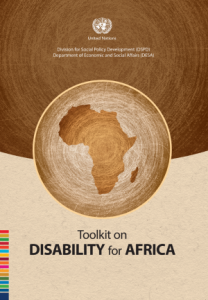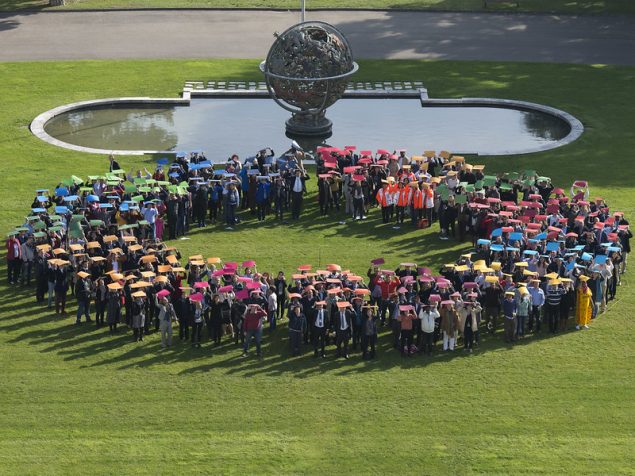The Convention Is in Force – What Next? [WORD]
A country that ratifies the Convention on the Rights of Persons with Disabilities agrees to be legally bound to treat persons with disabilities as subjects of the law with clearly defined rights as any other person. Ratifying countries will have to adapt their domestic legislation to the international standards laid out in the treaty.
So far, 25 countries have ratified the Convention, while more than 120 have signed – indicating an intention to ratify in the future. The Convention and its Optional Protocol entered into force on 3 May 2008. At the first Conference of the States Parties, the countries that have ratified the Convention will elect independent experts who will form the Committee on the Rights of Persons with Disabilities, which will receive periodic reports from States Parties on progress made in implementing the Convention. States Parties are to designate a focal point in the government and create a national mechanism to promote implementation of the Convention.
The Optional Protocol to the Convention allows individuals and groups from countries that have ratified the Protocol to petition the Committee once all national recourse procedures have been exhausted.
A Comprehensive Convention
The Convention comprehensively addresses various barriers facing persons with disabilities, including discrimination – such as denial of the right to vote – as well as social and economic barriers, such as discrimination in employment and an inadequate standard of living.
On the fundamental issue of accessibility, the Convention requires countries to identify and eliminate obstacles and barriers to accessibility in the areas of “information, communication and other services, including electronic services and emergency services”. Access must also be provided to “buildings, roads, transportation and other indoor and outdoor facilities, including schools, housing, medical facilities and workplaces”. Countries are to develop minimum standards for the accessibility of public facilities and services, and ensure that private facilities and services offered to the public take accessibility into account.
Among other things, ratifying countries are bound to:
• Ensure equal recognition before the law, including the right to own and inherit property, to control financial affairs and to have access to bank loans, credit and mortgages;
• Put in place laws and administrative measures that guarantee freedom from exploitation, violence and abuse;
• Promote the recovery and rehabilitation of the victim, in cases of abuse, and prosecute the culprit;
• Promote personal mobility, including by facilitating access to mobility aids and devices;
• Provide “reasonable accommodation” in places such as schools and the workplace, that is, those necessary and reasonable modifications and adjustments that permit inclusion of persons with disabilities;
• Ensure the right of persons with disabilities to live independently and not be obliged to reside in a particular living arrangement;
• Ensure the right to marry and to found a family;
• Include students with disabilities in the general education system, providing the necessary support when needed;
• Ensure equal access to vocational training, adult education and lifelong learning;
• Provide health care and those specific health services needed because of disabilities;
• Protect the right to work and prohibit job discrimination;
• Promote the employment, self-employment and entrepreneurship of persons with disabilities;
• Ensure an adequate standard of living and social protection, including through public housing, assistance for disability-related needs, and aid with disability-related expenses in case of poverty;
• Guarantee participation in political and public life and in cultural life, recreation, leisure and sport.
Certain steps to implement the Convention will involve costs. However, the Convention calls for the “progressive realization” of most of its provisions, in line with the resources of individual countries. For countries where resources are scarce, it is hoped that international assistance – which has to date largely neglected the inclusion of persons with disabilities – will help.
Making changes in line with the Convention will benefit not only persons with disabilities, but all others as well. Elevators and ramps, for example, provide more options for everyone. Design changes that are needed to follow the letter and spirit of the Convention generate new ideas and innovations that improve life for all people. The Convention promotes “universal design” – the design of products, environments, programmes and services usable by all people, to the greatest extent possible, without the need for adaptation or specialized design.
In studies, the World Bank found that the cost of embedding accessibility features at the time of construction of buildings is minimal. It has been shown that making buildings accessible adds less than one per cent to construction costs.
“It is actually good economics to ensure that persons with disabilities are able to live up to their potential,” said the Chief of the UN Secretariat for the Convention on the Rights of Persons with Disabilities, Akiko Ito. “When there are no obstacles in their way, persons with disabilities are employees, entrepreneurs, consumers and taxpayers like everybody else.”
“Society is missing out on a large talent pool,” said Ms. Ito. “Persons with disabilities can contribute a wide array of expertise, skills and talents. Studies show that their job performance is as good, if not better, than the general population. High retention rates and less absenteeism more than offset fears that it is too costly to accommodate their needs in the workplace.”
“Fears that hiring persons with disabilities add significant costs to employers are overblown,” Ms. Ito added. In a 2003 survey in the United States, almost three quarters of employers reported that employees with disabilities did not require any special accommodation at all. “Everybody is set to gain in fully integrating persons with disabilities.”
Published by the United Nations Department of Public Information — DPI/2507A — May 2008




